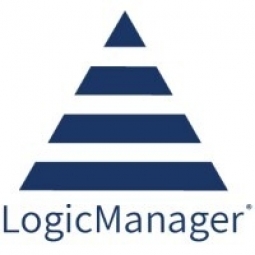公司规模
Large Corporate
地区
- America
国家
- United States
产品
- LogicManager
技术栈
- Enterprise Risk Management software
实施规模
- Enterprise-wide Deployment
影响指标
- Productivity Improvements
- Customer Satisfaction
技术
- 应用基础设施与中间件 - 数据交换与集成
适用行业
- 医疗保健和医院
适用功能
- 质量保证
- 商业运营
用例
- 监管合规监控
服务
- 系统集成
- 培训
关于客户
Winona Health 是一家独立的社区医疗服务提供商,致力于为社区提供高质量、低成本的医疗服务。该组织利用技术(包括使用集成电子医疗记录)来提供服务。Winona Health 多次被 Health Network 评为“最互联”医院。该组织拥有 1,000 至 5,000 名员工,是一家医院和医疗行业的非营利组织。Winona Health 已获得多项认证和奖项,包括 HIMSS 第 7 阶段和第 6 阶段认可以及绩效卓越网络 (PEN) 奖。
挑战
Winona Health 是一家社区医疗保健提供商,每年面临着管理 3,000 多起与患者和访客安全相关的事件的挑战。现有的事件管理软件无法与董事会授权的企业风险管理 (ERM) 计划集成。事件管理计划与 ERM 的分离降低了该计划的价值,因为事件是风险的表现。该组织需要将其风险缓解活动追溯到他们在医院事件方面的努力,以了解哪些控制措施最有效以及在何处提供额外资源。新系统的实施也带来了后勤挑战。客户与 LogicManager 签署协议和与之前的事件管理解决方案的合同结束之间只有 45 天的时间。员工报告患者安全事件的任何停机时间都会引起巨大的监管和责任问题。
解决方案
LogicManager 的业务分析师与 Winona Health 合作,简化了其事件报告流程和程序,确保以高效的方式收集所有关键信息。该组织的管理员接受了如何管理流程和配置门户更改的培训。尽管严格的时间框架要求系统支持数十种事件类型,但客户没有支付任何专业服务费,并按计划投入生产环境,没有停机时间。护士、医生、保安人员和其他用户在与 60 多人的现场虚拟会议中接受了培训。培训由 LogicManager 制作的视频教程和个性化用户指南补充,客户无需支付额外费用。医疗保健组织能够将事件与风险的关键驱动因素联系起来,并确定趋势和机会,以减少患者和访客安全事件的发生频率和影响。
运营影响
数量效益

Case Study missing?
Start adding your own!
Register with your work email and create a new case study profile for your business.
相关案例.

Case Study
Hospital Inventory Management
The hospital supply chain team is responsible for ensuring that the right medical supplies are readily available to clinicians when and where needed, and to do so in the most efficient manner possible. However, many of the systems and processes in use at the cancer center for supply chain management were not best suited to support these goals. Barcoding technology, a commonly used method for inventory management of medical supplies, is labor intensive, time consuming, does not provide real-time visibility into inventory levels and can be prone to error. Consequently, the lack of accurate and real-time visibility into inventory levels across multiple supply rooms in multiple hospital facilities creates additional inefficiency in the system causing over-ordering, hoarding, and wasted supplies. Other sources of waste and cost were also identified as candidates for improvement. Existing systems and processes did not provide adequate security for high-cost inventory within the hospital, which was another driver of cost. A lack of visibility into expiration dates for supplies resulted in supplies being wasted due to past expiry dates. Storage of supplies was also a key consideration given the location of the cancer center’s facilities in a dense urban setting, where space is always at a premium. In order to address the challenges outlined above, the hospital sought a solution that would provide real-time inventory information with high levels of accuracy, reduce the level of manual effort required and enable data driven decision making to ensure that the right supplies were readily available to clinicians in the right location at the right time.

Case Study
Gas Pipeline Monitoring System for Hospitals
This system integrator focuses on providing centralized gas pipeline monitoring systems for hospitals. The service they provide makes it possible for hospitals to reduce both maintenance and labor costs. Since hospitals may not have an existing network suitable for this type of system, GPRS communication provides an easy and ready-to-use solution for remote, distributed monitoring systems System Requirements - GPRS communication - Seamless connection with SCADA software - Simple, front-end control capability - Expandable I/O channels - Combine AI, DI, and DO channels

Case Study
Driving Digital Transformations for Vitro Diagnostic Medical Devices
Diagnostic devices play a vital role in helping to improve healthcare delivery. In fact, an estimated 60 percent of the world’s medical decisions are made with support from in vitrodiagnostics (IVD) solutions, such as those provided by Roche Diagnostics, an industry leader. As the demand for medical diagnostic services grows rapidly in hospitals and clinics across China, so does the market for IVD solutions. In addition, the typically high cost of these diagnostic devices means that comprehensive post-sales services are needed. Wanteed to improve three portions of thr IVD:1. Remotely monitor and manage IVD devices as fixed assets.2. Optimizing device availability with predictive maintenance.3. Recommending the best IVD solution for a customer’s needs.

Case Study
HaemoCloud Global Blood Management System
1) Deliver a connected digital product system to protect and increase the differentiated value of Haemonetics blood and plasma solutions. 2) Improve patient outcomes by increasing the efficiency of blood supply flows. 3) Navigate and satisfy a complex web of global regulatory compliance requirements. 4) Reduce costly and labor-intensive maintenance procedures.

Case Study
Cloud-based healthcare solution for Royal Philips
Royal Philips wanted to launch its cloud-based healthcare solution HealthSuite Digital Platform in China to deliver services to help cope with challenges related to urbanization and population growth. Philips wanted to achieve this goal by combining mobile, cloud computing and big data technologies. To bring this platform and product to market, Philips required cloud computing and local technical service capabilities in China, in addition to a flexible IT infrastructure that could handle user requests.








